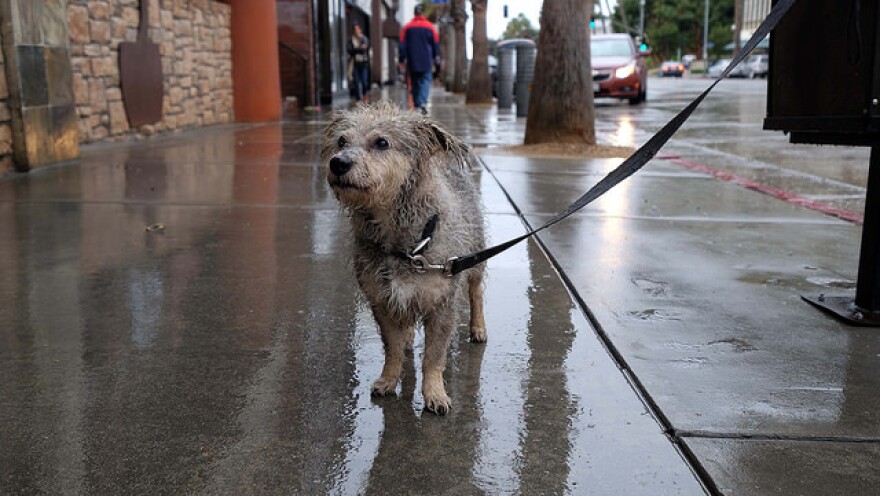This story is free to read because readers choose to support LAist. If you find value in independent local reporting, make a donation to power our newsroom today.
This is an archival story that predates current editorial management.
This archival content was written, edited, and published prior to LAist's acquisition by its current owner, Southern California Public Radio ("SCPR"). Content, such as language choice and subject matter, in archival articles therefore may not align with SCPR's current editorial standards. To learn more about those standards and why we make this distinction, please click here.
So, Like, What Happened To El Nino?

Dear LAist readers,
It comes with a great amount of regret that I have to inform you that El Niño will not be happening. Rumors of its effect in Southern California were greatly exaggerated, but, for what it's worth, it wasn't just us LAist bloggers who were fooled. The National Weather Service (NWS), the National Oceanic and Atmospheric Administration (NOAA), and all of those other reporters who pined for a wet winter were also misled.
Why?
Well, it turns out that the 2015-2016 El Niño season was actually a little bit abnormal, especially when contrasted with the last epic El Niño we received back in 1997 and 1998. As NOAA pointed out this week, this season's El Niño 'flipped,' sending much of the rain and snow that was forecasted for Southern California to dump down on our neighbors to the north.
A quick glance at the precipitation maps underscores this point. Where Southern California experienced below-average amounts of rainfall, Northern California and the Pacific Northwest experienced dramatically higher—10 inches(!) in some places—totals.

National precipitation variances Jan-March 2016. (Courtesy the National Oceanic and Atmospheric Administration)
El Niño totally happened, it just didn't happen to us Southern Californians. The reasons for the flip aren't entirely clear. Climate scientists, as the L.A. Times points out, seem to think it may have something to do with an abnormally large "blob" of warm water in the ocean off the coast of Alaska and the western coast of the North American continent (remember, El Niño is basically a bunch of warm water moving north towards Alaska). It's possible, the scientists suggest, that the combination of warm 'blob' water and warm El Niño water simply meant the jet stream behaved differently.
As to what causes 'the blob,' the list goes on and on, but usually just reverts back to the inherent instability of a global climate system disrupted by a few centuries of humanity burning all the fossil fuels they possibly can.
Where our northern neighbors had a very wet winter, the month of February was actually the driest on record for the previous 30 years in Southern California. Not so coincidentally, this year's February was also the hottest on record.
As for the drought? It's still on. Just last week, Governor Brown declared that the state's temporary water-saving rules are now permanent, to be viewed as a sort-of new-normal for Californians. While state rainfall totals were up, and some snowpack was replenished, the California Department of Water Resources reports that snowpack levels are just about of their historical averages.

I love you, California. You're the greatest state of all. (U.S. Drought Monitor)
Huge swaths of California are still officially parched too. The image above, current as of May 10, underscores the severity. The darkest portions are areas of 'exceptional drought,' working up through 'extreme drought,' 'severe drought,' 'moderate drought,' and 'abnormally dry' conditions.
Don't start watering your lawn.







